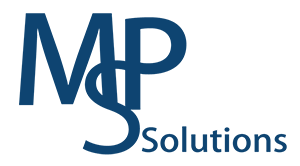In today’s fast-paced business landscape, companies in Singapore are constantly seeking ways to improve their operational efficiency and stay ahead of the competition. One solution that has gained popularity in recent years is SAP Business One, an enterprise resource planning (ERP) software that streamlines various business functions into a single, integrated system.

Singapore city skyline
The benefits of integration is immense: improved productivity of employees, enhanced data visibility due to real-time reports, and streamlined financial management. However, integration can prove to be a daunting task for most people. We have devised a step-by-step guide on how SAP Business One is integrated into companies so that you know what goes on from start to end. Here’s how it works:
Initial Assessment
- Before beginning the implementation of SAP Business One, IT consultancies will conduct an initial assessment of the company’s current processes, systems, and data. This assessment is important and will help identify key areas where SAP Business One can add the most value and consultants can provide guidance on how best to configure the software to meet the company’s specific needs.

The initial assessment, also known as the User Requirement Study (URS), is done to formally map out the requirements and wishes of the company employees.
Hardware and Software Requirements
SAP Business One requires a dedicated server or cloud environment to run on. Depending on the company requirements, the company may have to allocate some budget into procuring and configuring a server. The SAP Business One software can the be purchased and installed on the server.
With the recent advancements in the safety and security of cloud technology, companies are opting for cloud hosting instead. Unlike acquiring a server rack to host SAP Business One which costs an arm and a leg and requires dedicated space for operation, cloud hosting is nimble and only requires a subscription.
Data Migration
The company’s existing data will need to be migrated to SAP Business One. To facilitate this, data will have to be cleaned up, and consultants will work with employees to map the existing data to the appropriate fields in the software before importing. While this process can be time consuming, it is important to ensure that the data is accurate and complete.
Business Process Mapping
The company’s existing business processes will need to be mapped out in detail and compared to the standard business processes supported by SAP Business One. This will help identify any gaps and provide guidance on how to customize SAP Business One to meet the company’s specific needs.
For example, a company doing wholesale beauty products who has not been digitalized wishes to branch out to e-commerce. As they are functioning on the old book & ledger system, while being supported by basic excel spreadsheets, the business is not nimble enough to grasp opportunities. IT consultants well versed in SAP Business One will identify these weak points to the company and provide direction on how the ERP software can fill in for the shortfalls.
Customization
SAP Business One is highly configurable and can be customized to meet the specific needs of the company. This may involve creating custom fields, modifying existing forms and reports, and building custom modules or add-ons. For instance, a SAP consultant will create custom fields and user-defined objects as well as customized AP/AR invoices and report templates to fit your business needs. This step can only be accomplished after completing the URS.
Integration with Other Systems
SAP Business One can be integrated with other systems such as CRM, eCommerce, or supply chain management systems. This integration can be achieved through various methods such as APIs, web services, or middleware. It is important to ensure that any integration is well-designed and tested to avoid data errors or inconsistencies.
The SAP consultants at MPS Solutions specialize in full-scale integration of eCommerce platforms into SAP Business One. Our backend team of full-stack developers create APIs to ensure that integration into popular platforms like Shopee, Lazada, and Magento is possible and seamless.
User Training
Once SAP Business One has been configured and integrated into the company’s existing systems, SAP consultants will work to provide user training via the User Acceptance Test (UAT). This is to ensure that the system is running optimally and employees can be acquainted with the newly implemented system. During this stage, there will be training on various features and functionalities of SAP Business One, as well as providing unique guidance on how to perform specific tasks related to the company’s business processes.
Conclusion
In conclusion, SAP Business One offers a comprehensive suite of features that can help Singaporean companies streamline their operations, improve efficiency, and drive growth. By integrating this powerful software solution into their business processes, companies can gain a competitive edge in today’s fast-paced marketplace. Whether it’s managing inventory, automating financial processes, or analyzing data, SAP Business One provides a robust set of tools that can support the unique needs of businesses in Singapore and help them achieve goals.
If you’re interested in exploring SAP Business One integration for your company, don’t hesitate to reach out to MPS Solutions. We are a SAP-certified partner with in-depth expertise in various industries. Contact us today to learn more and take the first step towards digital transformation!

Recent Comments